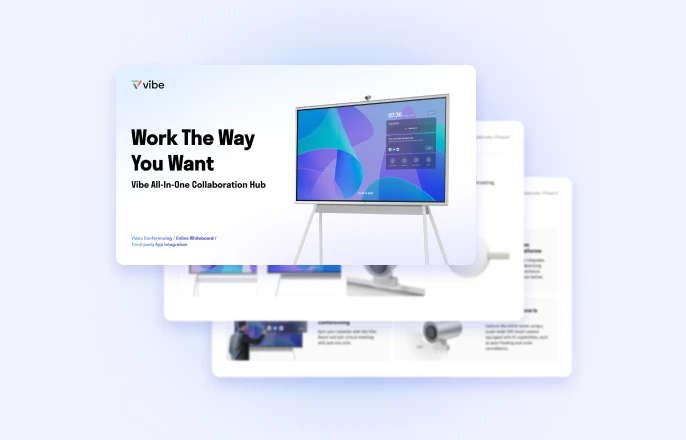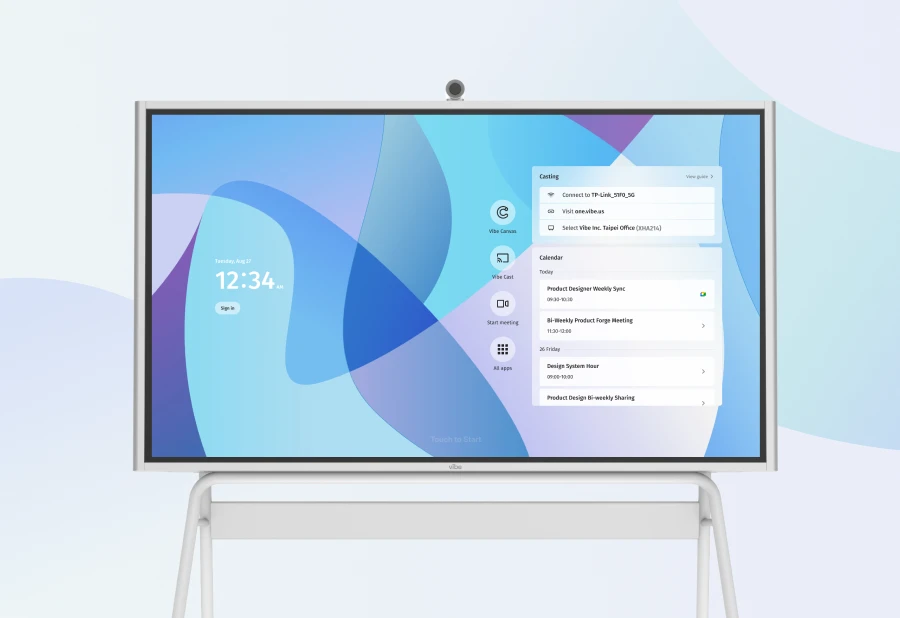Change is inevitable. It’s one of those truths of every workplace, no matter how much we love the comfort of our daily routines. When it comes to advancing tech, that change can happen fast. And although adopting new technology can significantly impact the quality of our work for the better, introducing something new to your employees’ workflow isn’t without its challenges.
It’s critical to have an action plan when approaching the subject of new technology in the workplace. Here are some of our best tips for preparing your team for changes to their workflow, seamlessly introducing new tech, and customizing the experience to curb potential objections.
Why guidance is crucial to adopting new tech
Good onboarding requires careful preparation and a thorough understanding of the ways it will change the daily tasks and habits of different groups of employees. No two employees are likely to be in the same place, technologically speaking. No matter how tech-savvy or well-trained they are with certain tools, each member of your team will still experience something of a learning curve when incorporating new tech into the business.
Maintain an empathetic approach throughout the process, and communicate clearly as you execute your onboarding plan. This assures reluctant individuals that you hear their concerns (while also assuring early adopters that their enthusiasm is being rewarded).
Help the team see what’s in this for them
Leading a team through a transition requires a personal touch. After all, data shows the pace of adopting new technology in the workplace is too slow 63% of the time. If you don’t help your team embrace the vision of what’s possible with new tech, you risk a sluggish attitude toward something that should be simple and exciting.
Be aware that part of your role as a leader is to come to your team prepared with an in-depth knowledge of the new application (whatever it may be). If you’ve made a genuine effort to buy in, others are more likely to follow. Plus, you’ll be better equipped to answer questions about the technology after your own trial run with it. If it lacks an intuitive UI or has cool hidden features, you’ll want to know before anyone else.
Explore any hangups your employees might have with the adoption process. It’s possible that they prefer initial learning through self-discovery or some other means. Understanding what’s holding them back can help you bridge the gap between how your team works now and what the new work environment will look like with everyone’s buy-in.
Related: How to Write a Remote Onboarding Plan
How to construct a new tech onboarding plan
Successful onboarding requires open communication and clear expectations for every member of the team (leadership included). Without a plan, enacting major changes to an office’s existing system risks failing to convey your vision to employees. It also makes accountability for any issues that arise nearly impossible.
Start the onboarding process by having your goals and your roadmap for reaching them clearly stated to everyone involved. If incorporating new technology into the workplace can’t be explained in simple, concise terms, the plan is probably too complicated. Another possibility? Your team doesn’t fully understand the advantages of adopting the new tech yet. A successful onboarding plan is built on the premise that full buy-in won’t be accomplished overnight. Instead, it’s a process which requires:
-
pre-demo preparation
-
an accurate assessment of the best uses for the technology from the perspective of each team member
-
post-adoption follow-ups to address any concerns so that the onboarding sticks
 A man works on his laptop while following his company's onboarding plan for adopting new technology.
A man works on his laptop while following his company's onboarding plan for adopting new technology.Step-by-step instructions for adopting new technology
Developing a customizable template for preparing, delivering, and following up on an onboarding initiative allows leaders to tailor their onboarding plan to groups interested in different functions or aspects of the product. Depending on your particular industry or product, your demo could require more or less detailed explanation, demonstration, and Q&A time at the end. This all depends on the nature of the new technology and the role it will play in the workplace.
Here’s how Vibe’s own customer success manager, Denise Gutierrez, successfully aids teams in adapting Vibe’s innovative technology:
1. Prime teams beforehand
"Before even approaching a hands-on demonstration of new Vibe boards, I either deliver a pre-onboarding survey or conduct a 15-minute pre-onboarding call to determine how our product fits into the new team’s workflow."
2. Assess their use case
"Exploring detailed goals and uses for the board shapes how I go about delivering our onboarding demo. I wouldn’t want to construct a one-size-fits-all use-case that doesn’t apply evenly to every industry. Architects and classroom educators will need different information about the technology’s most useful functions and capabilities. Do your homework beforehand, and find out how best to showcase the tech’s usefulness to each group of employees."
3. Ask questions
"Become a curious new member of their team. Ask questions like: What do you plan to use this for? What third-party apps are you using? What kind of video conferencing do you prefer? Do you [have a preference]? The answers guide the 30-minute demo experience."
4. Send a detailed agenda
"The day before onboarding, I’ll deliver a custom overview of the product demo with a bulleted list of what information will be presented. This also gives employees time to register accounts, create passwords and set themselves up to hit the ground running after the demo."
5. Demo new technology according to their needs
"Show how the new technology will positively impact your employees’ work. Illustrate ease of use, highlight functions that save time, and display your familiarity with the product as you deliver your vision to the team. I like to approach it in a way that doesn’t make it seem like it’s hard."
Related: Digital Whiteboards: the 11 Best Reasons to Invest
6. Save (one of) the coolest features for last
"It leaves a more lasting impression when you close with a showstopper!"
7. Wrap up with Q&A
"Here’s where I’ll touch on some things for my benefit, answering frequently asked questions to keep the excitement around the demo moving forward. I’ll address items that may require a simple fix rather than a help ticket. Then things move on to the what-ifs of the Q&A — there’s always a question about ‘what if I wanted to do this…’ with the technology."
Throughout onboarding and especially the product demo, encourage your team whenever possible. Explain things simply and avoid making changes appear radical or overly sophisticated.
"I try to always take an empathetic point of view, and to understand I just delivered an overwhelming amount of information," Denise says. "We’re all at different parts of our technology journey. Even the most proficient users will have some sort of learning curve. So I try to be empathic and let them know I’m there for them, I’m going to answer questions, and this isn’t the last time we’re going to speak."
The post-onboarding process
We help new users embrace change by sending relevant articles from our knowledge base and keeping the line of communication open. Staying in touch around new UI updates, sending a post-onboarding survey link, and having a process in place to address any necessary concerns goes a long way toward helping those still hesitant to try new things.
"If I notice that someone is, say, a YouTuber and they like to write out a lot of mind-mapping and things like that, then I’ll send a cool article regarding whatever it is I think they might like to do with the board," Denise says. "If we get a new UI update and I remember ‘Hey, they said they liked this and could benefit from this,’ I’ll send a nice personalized note explaining the update and how I think they’ll like it."
Related: Choose the Best Remote Work Model for Your Company’s Needs
Plan for new technology adoption success
The key to adopting new technology is showing your team in clear terms what’s in it for them. They’ll be more likely to show optimism in new changes when the tech in question takes work off of their plates, eliminates old pain points, and appears generally intuitive to use. (Nobody we know enjoys suspending regular work activities for multi-day trainings on new systems).
With this useful template at your fingertips, you’ll be prepared to apply new technology to your business and avoid some of the obstacles that too often keep impactful changes from really getting off the ground.
Looking for an awesome new interactive workplace tool? Our team at Vibe can show you firsthand how we onboard teams to our technology — reach out to us today for a free demo.
Vibe offers a collaborative solution combining an interactive digital whiteboard and innovative smart software. Increase engagement and efficiency at your brainstorming sessions, virtual training, and classroom sessions by integrating your favorite applications with video conferencing and an infinite, mess-free writing canvas. Collaborate today with Vibe.
Looking for the latest in interactive whiteboard technology? Check out Vibe today!









-1sbltxxq4FYxHrXrwJVLsCDNsXpqNa.webp)
-5Zp0pmSytvcuYDVs1LvuwplKuRneK0.webp)
